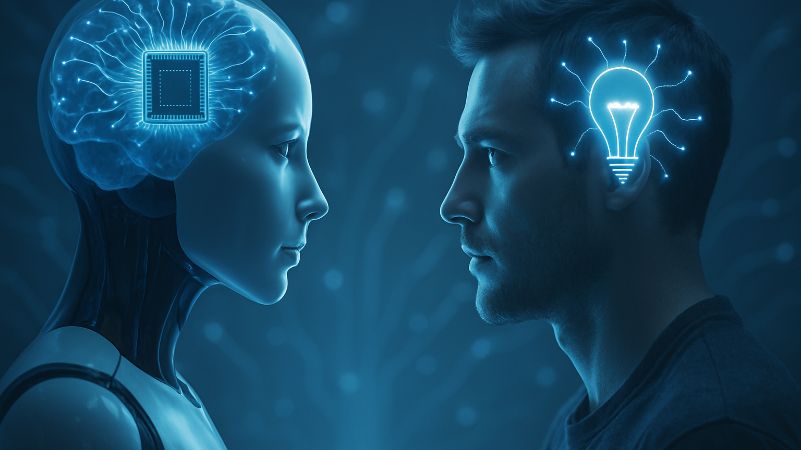IP in the Knowledge Economy: A Narrative from CEPI MIPLM 2025/26
The story of modern economies is, at its heart, the story of transformation. For centuries, wealth was created through land, then through machines, then through production lines and global trade. But in the last few decades, a profound shift has taken place. Value is no longer primarily generated by tangible assets. Instead, it lies in knowledge—ideas, algorithms, designs, brands, and the invisible structures that shape innovation. This is the stage on which intellectual property has emerged, not as a legal afterthought but as a central character in the drama of economic development.

The lecture The IP Economy in the CEIPI MIPLM program invites us to follow this story step by step. It begins by asking a simple but unsettling question: how can we measure value when what is most valuable cannot be touched? Traditional economic tools were forged in an age of steel, coal, and oil. Balance sheets were dominated by factories, machines, and inventories. Yet today, the most powerful companies in the world—Apple, Microsoft, Google, Amazon—derive their value not from the number of machines they own but from their intangible assets. In fact, more than 80 percent of the market capitalization of leading firms is now linked to knowledge-based intangibles.
Here is a video summary of the presentation “IP In The Fourth Industrial Revolution” by David J. Kappos, Under Secretary of Commerce for Intellectual Property and Director of the United States Patent and Trademark Office (USPTO) from 2009 to 2013, IP Service World, Munich, Nov. 21, 2016:
This is why we must speak of an “IP economy.” It is an economy where the main resource is intellectual capital, where markets revolve around rights, licenses, and access to knowledge, and where competition is defined not by physical control of raw materials but by the ability to manage, protect, and monetize ideas.
The lecture traces this evolution with a sense of narrative progression. In the industrial economy, power lay with those who controlled infrastructure: railways, shipping lines, steelworks. In the post-war era, consumer markets expanded, and the service economy began to grow, but physical goods still anchored value. The decisive break came with digitization. Software could be replicated infinitely at near-zero cost, yet its development required enormous investment and expertise. How could such paradoxical assets—expensive to create, cheap to copy—be secured? The answer was intellectual property. Copyright, patents, and trade secrets became the guardians of the knowledge economy.
But intellectual property is more than protection; it is also a language for business. The lecture emphasizes that IP provides the rules by which markets for knowledge operate. Consider standards in telecommunications: without clear IP rules for licensing, interoperability would collapse. Or look at pharmaceuticals: without patents, companies would hesitate to invest billions in R&D for new drugs. In these cases, IP is not an add-on; it is the very structure that makes industries function.
Here is a video summary of the Microsoft example from the book “Reinventing the Bazaar – a natural history of markets”:
One of the narrative arcs in the lecture highlights how intellectual property reshaped entire business models. The case of software is particularly telling. In the early days, software was bundled with hardware, almost given away for free. Over time, software became the core product, and licensing models emerged. Today, the shift to Software-as-a-Service (SaaS) means that IP is not just protected but continuously monetized through subscriptions. What began as a product has become an ongoing relationship, and IP is the key enabler of this transformation.
The lecture also dives into the rise of intangible assets beyond IP in the strict legal sense: know-how, organizational routines, data, and relationships. These “invisible assets” form the foundation of competitive advantage in modern firms. Yet they are fragile without formal structures. Intellectual property provides the bridge between intangible creation and economic exploitation. It transforms ideas into tradable goods, enabling companies to enter markets, raise investment, and negotiate partnerships.
To make this story vivid, the lecture uses the metaphor of a balance sheet turned upside down. In the 1970s, the tangible assets of a typical manufacturing firm made up the majority of its value. Today, those assets might account for only a fraction, while brands, patents, platforms, and customer data drive the rest. What investors seek is not physical plant but intellectual firepower. The capacity to create, control, and scale knowledge is now the ultimate competitive advantage.
The narrative then turns to the societal implications of the IP economy. If ideas are the new oil, then access to them becomes a political and ethical question. The lecture reminds us of global debates on pharmaceuticals during the COVID-19 pandemic: should vaccines be freely shared as global public goods, or protected as proprietary inventions? The tension between public health, innovation incentives, and fairness illustrates the complex role IP plays in balancing private profit with social welfare.
Similarly, in the digital economy, questions of IP touch every user. Streaming platforms, digital art, AI-generated content—all these domains rely on intellectual property frameworks to determine who owns what and who pays whom. Without IP, creators would struggle to capture value, but with IP, monopolies can sometimes limit access. The story is therefore not one of simple triumph but of constant negotiation.
Here is a video summary of the concept of intangibility:
Another narrative thread in the lecture follows how companies actively design their competitive positions through IP. For instance, firms like Qualcomm built their power not on producing chips but on controlling essential patents for mobile communication standards. Their revenue streams flow from licensing fees across the entire industry. This is the logic of the IP economy: value can be captured not only by producing products but also by owning the invisible rules by which products interact.
The lecture stresses that in the knowledge economy, intellectual property must be managed strategically, not administratively. Filing patents is not the goal. The goal is to create IP systems that align with business models, generate revenue, and sustain differentiation. This shift from administration to management mirrors the broader shift from industrial to knowledge economies: the center of gravity has moved from physical control to intellectual design.
In telling this story, the lecture also points to the risks of neglecting IP. Firms that underestimate its role can lose their advantages overnight. Start-ups that fail to secure their inventions may find themselves excluded from markets by better-prepared competitors. Established firms that cling to outdated IP models may miss new monetization opportunities. The lesson is clear: in the IP economy, ignorance is costly.
The conclusion of the lecture ties these threads together into a coherent message. The knowledge economy is not a passing phase; it is the defining feature of our era. Intellectual property is its operating system, the code that underlies competition, cooperation, and innovation. Without IP, ideas would be free but fragile. With IP, they become assets—capable of generating investment, sustaining industries, and shaping markets.
The story ends where it began: with the recognition that value has shifted. We are no longer measuring wealth by machines or warehouses but by creativity, design, and innovation. The companies that master intellectual property will not just participate in the knowledge economy; they will define it. And for professionals trained in IP management, the task is clear: to guide organizations through this transformation, ensuring that their knowledge is not only created but also protected, leveraged, and turned into lasting economic power.
In this way, the lecture paints a picture of intellectual property as both shield and engine: a shield that protects fragile intangibles from imitation, and an engine that drives growth by making knowledge tradable. The knowledge economy is still being written, but one lesson already stands out. The winners of tomorrow are those who understand that ideas, once properly managed, are the most powerful assets of all.
Here is a video summary of the entire lecture on the role of IP and IP management in the knowledge economy:



